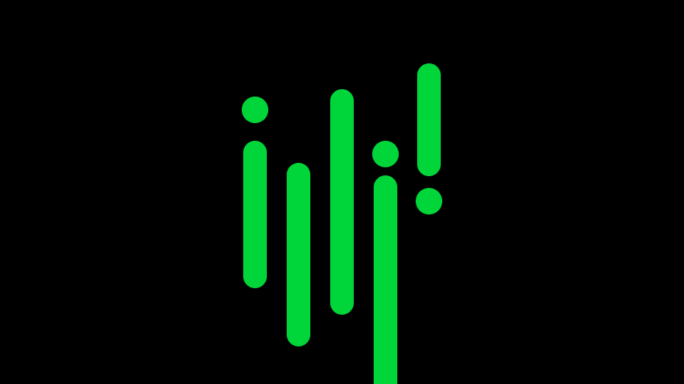Start simple, scale big: How to grow your SaaS finance tech stack
Is your SaaS business growing? You need to make sure your finance tech stack grows with it. Discover how to make that happen.

As your Software as a Service (SaaS) startup grows, it’s tempting to handle increasingly complex finances by creating more spreadsheets and employing more people.
But if you’re approaching this task manually, the sheer number of transactions in a SaaS business can overwhelm you until it’s hard to catch up.
Gene Hammons, director of accounting consultancy Profit from ERP, says: “The big, big pitfall we see is people try to handle growth with a lot of spreadsheets.
“They add one person, and it gets busier, then they add another person.
“You end up looking at hundreds of thousands of pounds in labour every year to avoid investing in a piece of software.”
Here are five ways you can tell your current financial system isn’t working for you anymore:
- Data is disconnected and managed manually
- You rely on the back office for reporting
- You’re extending your billing cycles and close times
- You can’t scale your processes
- You only run your business on what your software is capable of
What, then, is the answer?
Build your finance tech stack.
Want to know how to do it? Great – we cover that in this article, focusing on the following:
Why a finance tech stack is essential
Ready to build your tech stack? Start with your General Ledger
Growing a tech stack on your SaaS business journey
Five further steps to grow your finance tech stack
Your tech stack will grow with your business
Ask people who’ve been there and done it
Manage change as your business grows
What is a finance tech stack?
A finance technology stack is a combination of technologies that allow you to move beyond basic accounting and outdated systems with heavy Excel spreadsheet usage.
It can drive your SaaS business forward and cope with future growth demands.
Setting up a finance tech stack sounds like it will be complicated and expensive. However, you can build it in the cloud by taking your favourite bits of tech and stitching them together, as integrating software is much easier than it used to be.
Taking one example, professional services company BigTime has built a tech stack with different bits of software to integrate technologies such as automation, business intelligence (BI), client relationship management (CRM) and human capital management (HCM).
That’s cool, but even better is the fact that once you have a core financial management system in the centre of the finance tech stack, you only add new tech when you need it.
You might not need a CRM now, but the beauty of a tech stack is you can add one at any point in the future.
Why a finance tech stack is essential
Here are five other crucial reasons why your SaaS business needs a finance tech stack:
1. To respond to customer and competitive needs
You can add value by shaping the finance function’s strategy and, eventually, that of the wider business, using data insight and analytics.
Internal departments such as marketing, sales and procurement will be looking for your help with clean and concise reporting they can understand. At the same time, as your business gets bigger, you’ll need to share reports externally as standard to investors and other shareholders.
The finance tech stack could support your product and sales departments. For example, you may want to provide customers with a frictionless billing experience.
Picture an Amazon-style experience where making digital payments is so easy that it encourages your customers to spend more money on your products and services.
2. To quickly introduce new products to the market
You can use insights and business metrics to understand your existing products and uncover hidden opportunities.
3. To get your accounting in order
When scaling your SaaS business, you’ll want to report on your SaaS metrics and forecast your cash, billings, and revenue.
You’re probably already using technology to boost the efficiency of your accounting processes and financial management. To keep up with changing times, you need tech tools that still work together as you grow.
4. To align your use case to the market
You need to identify, clarify and organise your system requirements to match your industry goals and expectations.
5. To avoid monetisation and technical debt
As a SaaS business, you’re looking to get things right with technology early.
Without a tech stack that lets you pick and choose, you may end up with tech that you’ve stopped using yet are still paying money for as you’re tied into a lengthy contract.
Ready to build your tech stack? Start with your General Ledger
Now’s the time to start building your finance tech stack.
At the core of your technology stack is your general ledger (GL), the source of truth for your financial data. A GL comes with a cloud-based accounting system, which can eliminate manual work and improve reporting visibility at an early stage.
Chart of Accounts (CoA)
Building your General Ledger will involve setting up a Chart of Accounts (CoA), the organisational tool that provides a complete listing of all your accounts, broken down into subcategories.
The CoA helps you organise your finances as it can provide breakdowns of the financial transactions you conduct during specific accounting periods.
It can give shareholders and investors insight into your financial health, which is crucial as your business grows.
Growing a tech stack on your SaaS business journey
It’s best to use an iterative model instead of going ‘Big Bang’ and building out all your tech at once. Get the GL and the core of your stack live and understand how the software all works together.
Hammons says: “Getting the basics live and understanding how the software works before adding subsequent modules makes it easier for everyone.
“With a ‘Big Bang’ project, you’ve got a huge learning curve that can slow the whole project down to a crawl.”
The state of your tech stack will depend on where you are on your SaaS business journey. As you grow, your technology and reporting needs will get more complex, so it’s well worth thinking about this at an early stage.
Be mindful and begin with the end in mind.
Plan from the beginning—it’s fun to buy stuff, but it’s better if you know you can put it all together.
Businesses tend to buy technology in separate pieces, but you may waste valuable time getting the puzzle to fit if you don’t think about how it’ll all work together beforehand.
It pays to fully understand the financial workflows you want to automate through the cloud apps in your tech stack, as it will make implementation and any subsequent modifications easier.
Sam Jacobs, the founder of financial professional support group Revenue Collective, says “You can keep pace as the company grows and finance data grows.
“You’re spending less time on the close and more time analysing the data and forecasting to make proactive decisions.”
Five further steps to grow your finance tech stack
Once you’ve built the core of your finance tech stack, here are five further steps to follow while evolving your business.
1. Integrate quote-to-cash
Quote-to-cash (QTC) describes a business process that covers the steps taken from sales creating a quote, and drafting a proposal, to the payment received for services delivered.
As a SaaS business, implementing QTC will involve integrating your CRM system within your tech stack.
2. Establish contract-based billing
As your business grows, it’ll soon become a significant chore to bill customers using labour-intensive manual calculations.
You’ll want to implement cloud technology that allows you to automate your pricing and billing.
3. Automate end-to-end revenue management
SaaS businesses have a lot of work to do to track revenue and keep compliant. They have complex revenue recognition requirements, with add-ons, renewals, complex subscription modifications, pauses, and cancellations.
You can imagine how difficult this is to do if you stick with spreadsheets.
Instead, you’ll want to automate the whole end-to-end revenue management process, as well as other essential accounting tasks.
4. Create real-time SaaS and GAAP (Generally Accepted Accounting Principles) dashboards
If you have timely and accurate board-level metrics, you can make better decisions about product investments, hiring, acquisitions, churn, strategies and more.
5. Forecast revenues, cash, and expenses
If you can forecast critical metrics, you can anticipate where the business is going and pursue the right strategies to hire, acquire and scale.
Your tech stack will grow with your business
Here are suggestions on where your finance tech stack should be as your SaaS business gets bigger.
Seed
Where you are: You are planting a tree. You’re at the first step of your venture, funded by early investment in the form of seed funding, and you’re looking to figure out if your product or service meets market demand.
You might be throwing receipts in a shoebox, and you probably haven’t hired a finance person.
What you need: Accounting technology that can deal with simple payroll and accounts payable, that could already involve automation.
Series A
Where you are: Once you get the business off the ground, with increases in users, revenue, or other performance indicators, then you may have won Series A funding to further invest in your users, services, or product.
At this point, you’re looking for evidence that you’re making money and have a genuine model for making a long-term profit.
Understandably, your tech stack gets bigger as your financial needs ramp up in complexity, with an emphasis on order-to-cash billing and cash collection processes.
What you need: Look for technology that assists you in basic revenue recognition, expense management, SaaS dashboards and reporting.
Series B
Where you are: Now you’re cooking as a business. You’re taking it to the next level and waving goodbye to the development stage. You might have many millions of pounds in funding.
However, your business is still evolving, and you should have a recurring revenue model with the ability to upsell and renew customers to keep your growth rate up.
What you need: More from your finance tech stack to meet these maturing financial demands, so look for complex subscription management, revenue recognition, metrics, and commission/expense management.
Series C to F
Where you are: You’ve proven your business model and should look to professionalise your finances and clean up any experimentation from previous stages in your SaaS journey.
What you need: Your focus will be on budget vs actuals, forecasting/variance, and reconciliations.
Sale/IPO
Where you are: Ahead of a potential sale or initial public offering (IPO), you’ll have adopted a capital-efficient model and expanded to adjacent markets and geographies.
What you need: More standardised finances, with greater controls and compliance regarding public company reporting and international consolidations.
Ask people who’ve been there and done it
You may not have to reinvent the wheel.
There may be financial executives at high-growth SaaS businesses who have gone through this tech stack building journey, so why not get in touch with them?
Through shared experience, you may be able to avoid costly mistakes they have made.
Look for organisations that bring together committed financial pros for collaboration and honest thinking. Thanks to technology, you can access the insight of these people from the comfort of your home or office chair.
Manage change as your business grows
A finance tech stack won’t just affect accounting and finance. It touches areas such as sales, operations and IT.
If you’re upgrading or implementing technology, you’ll need to get anyone affected onside.
Find out what’s going on in other parts of the business. Understand what people’s drivers are, move them forward, and make sure they understand the new software coming in will make their job easier, not harder.
You might need to manage office politics and people with stubborn personalities opposed to changing software and processes. If that happens, make sure these people get correctly trained on the new tech—soon, they may even enjoy using it.
Invest in a tech stack to make the best decisions.
The primary driver of digital transformation in mid-size businesses is the finance professional, with six in 10 financial decision-makers driving transformation in the business.
Meanwhile, 77% will be unable to provide insights if they don’t invest in financial management technology.
In a SaaS business, it’s up to the CFO to drive digital transformation. If you’re in this role, you’ll need a good tech stack to make decisions quickly and become the strategic finance leader your business is looking for.
Ideally, you’ll be updating your tech stack as it grows, keeping up with changes and dealing with the challenges of your market.
You are central in keeping your business in the game.
But more than that, you’ll be responsible for redefining your SaaS finance function, and eventually the business, using data insight and analytics.
The digital CFO
CFOs, discover why digitalisation should be your top priority and see why investing in automation and the cloud will help your business stay ahead of the game.







Ask the author a question or share your advice